1. Productivity and Collaboration
1.1. Microsoft 365 Apps
1.1.1. MS Product Suite
1.1.1.1. PowerPoint
1.1.1.2. Word
1.1.1.3. Excel
1.1.1.4. OneNote
1.1.2. CompuCom Services
1.1.2.1. O365 Workshop
1.1.2.2. O365 Migration/Integration
1.1.2.3. Managed O365
1.2. Email and Calendar
1.2.1. MS Product Suite
1.2.1.1. Outlook
1.2.1.2. Exchange
1.2.2. CompuCom Services
1.2.2.1. Managed Exchange
1.2.2.2. Exchange Server Hybrid Integration/Migration
1.3. Meetings and Voice
1.3.1. MS Product Suite
1.3.1.1. Teams
1.3.2. CompuCom Services
1.3.2.1. Managed Collaboration Services
1.3.2.2. MSTeams Migration
1.3.2.3. MSTeams PTSN Integration
1.4. Social and Internet
1.4.1. MS Product Suite
1.4.1.1. Yammer
1.4.1.2. SharePoint
1.4.1.2.1. SharePoint Online
1.4.1.2.2. OnPrem
1.4.2. CompuCom Services
1.4.2.1. Managed SharePoint Services
1.4.2.2. SharePoint Migration/Integration
1.5. Task Management
1.5.1. MS Product Suite
1.5.1.1. Planner
1.5.1.2. Power Apps
1.5.1.3. Power Automate
1.5.1.4. To Do
1.6. Advanced analytics
1.6.1. MS Product Suite
1.6.1.1. MyAnalytics
1.6.1.2. Power BI Pro
1.7. Files and Content
1.7.1. MS Product Suite
1.7.1.1. OneDrive for Business
1.7.1.2. Azure Cloud File Storage
1.7.1.3. Stream Video
1.7.1.4. Sway
2. Device and App Management
2.1. MS Product Suite
2.1.1. Windows Enterprise
2.1.2. Microsoft 365 Admin Center
2.1.3. Windows Virtual Desktop
2.1.4. Microsoft Endpoint Manager
2.1.4.1. Microsoft Endpoint Configuration Manager
2.1.4.2. Microsoft Intune
2.1.4.3. Deployment and Configuration
2.1.4.3.1. Windows Autopilot
2.1.4.3.2. Autopilot with Windows Enterprise Image
2.1.4.3.3. Standard OnPrem Deployment
2.1.4.3.4. Windows Autopilot White Glove OOBE
2.2. CompuCom Services
2.2.1. EndPoint Management
2.2.1.1. App Packaging
2.2.1.2. Image Management
2.2.1.3. App Management
2.2.1.4. Patch Management
2.2.1.5. Antivirus
2.2.1.6. Encryption
2.2.2. Config
2.2.2.1. Disconnected
2.2.2.2. Connected
2.2.2.3. Autopilot
2.2.2.4. Autopilot White Glove OOBE
2.2.3. WIndows Virtual Desktop
2.2.3.1. Managed Desktop Integration/Migration
2.2.3.2. Managed Virtual Desktops
2.2.3.3. Managed Virtual Apps
3. Identity and Access Management
3.1. MS Product Suite
3.1.1. AzureAD
3.1.1.1. Microsoft Azure AD Connect
3.1.2. UE-V
3.1.3. Windows Hello for Business
3.2. CompuCom Services
3.2.1. AzureAD Workshop
3.2.2. AzureAD Migration/Integration
3.2.3. UE-V Workshop
3.2.4. UE-V Migration/Integration
3.2.5. Managed AzureAD/Managed AD
3.2.6. Managed Virtual Profiles
3.2.7. Dynamic Persona
4. Threat Protection
4.1. MS Product Suite
4.1.1. Microsoft Advanced Threat Analytics
4.1.2. Windows Defender Antivirus & Device Guard
4.1.3. Microsoft Defender Advanced Threat Protection
4.1.4. Microsoft 365 Advanced Threat Protection
4.1.5. Azure Advanced Threat Protection
4.2. CompuCom Services
4.2.1. Managed Edge Security
4.2.2. Managed End User Security
4.2.3. Managed Cloud Security
5. Information protection
5.1. MS Product Suite
5.1.1. Microsoft 365 data loss prevention
5.1.2. Windows Information Protection and BitLocker
5.1.3. Azure Information Protection
5.1.4. Cloud App Security
5.2. CompuCom Services
5.2.1. Managed DRM
5.2.2. Managed Cloud Security
6. Security Management
6.1. MS Product Suite
6.1.1. Microsoft Secure Score
6.1.2. Microsoft Security and Compliance Center
7. Advanced Compliance
7.1. MS Product Suite
7.1.1. Advanced eDiscovery
7.1.2. Customer Lockbox
7.1.3. Advanced Data Governance
7.1.4. Service Encryption with Customer Key
7.1.5. Privileged Access Management
7.2. CompuCom Services
7.2.1. Compliance Reporting and Analytics
7.2.2. Managed Compliance
